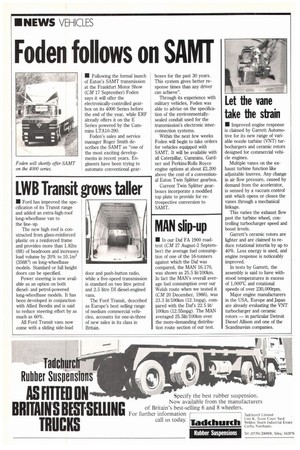Let the vane take the strain
Page 22

If you've noticed an error in this article please click here to report it so we can fix it.
• Improved engine response is claimed by Garrett Automotive for its new range of variable nozzle turbine (VNT) turbochargers and ceramic rotors designed for commercial vehicle engines.
Multiple vanes on the exhaust turbine function like adjustable louvres. Any change in air flow pressure, caused by demand from the accelerator, is sensed by a vacc-tun control unit which opens or closes the vanes through a mechanical linkage.
This varies the exhaust flow past the turbine wheel, controlling turbocharger speed and boost levels.
Garrett's ceramic rotors are lighter and are claimed to reduce rotational intertia by up to 40%. Less energy is used, and engine response is noticeably improved.
In tests by Garrett, the assembly is said to have withstood temperatures in excess of 1,000°C and rotational speeds of over 230,000ipm.
Major engine manufacturers in the USA, Europe and Japan are already evaluating the VNT turbocharger and ceramic rotors — in particular Detroit Diesel Allison and one of the Scandinavian companies.




































































































































